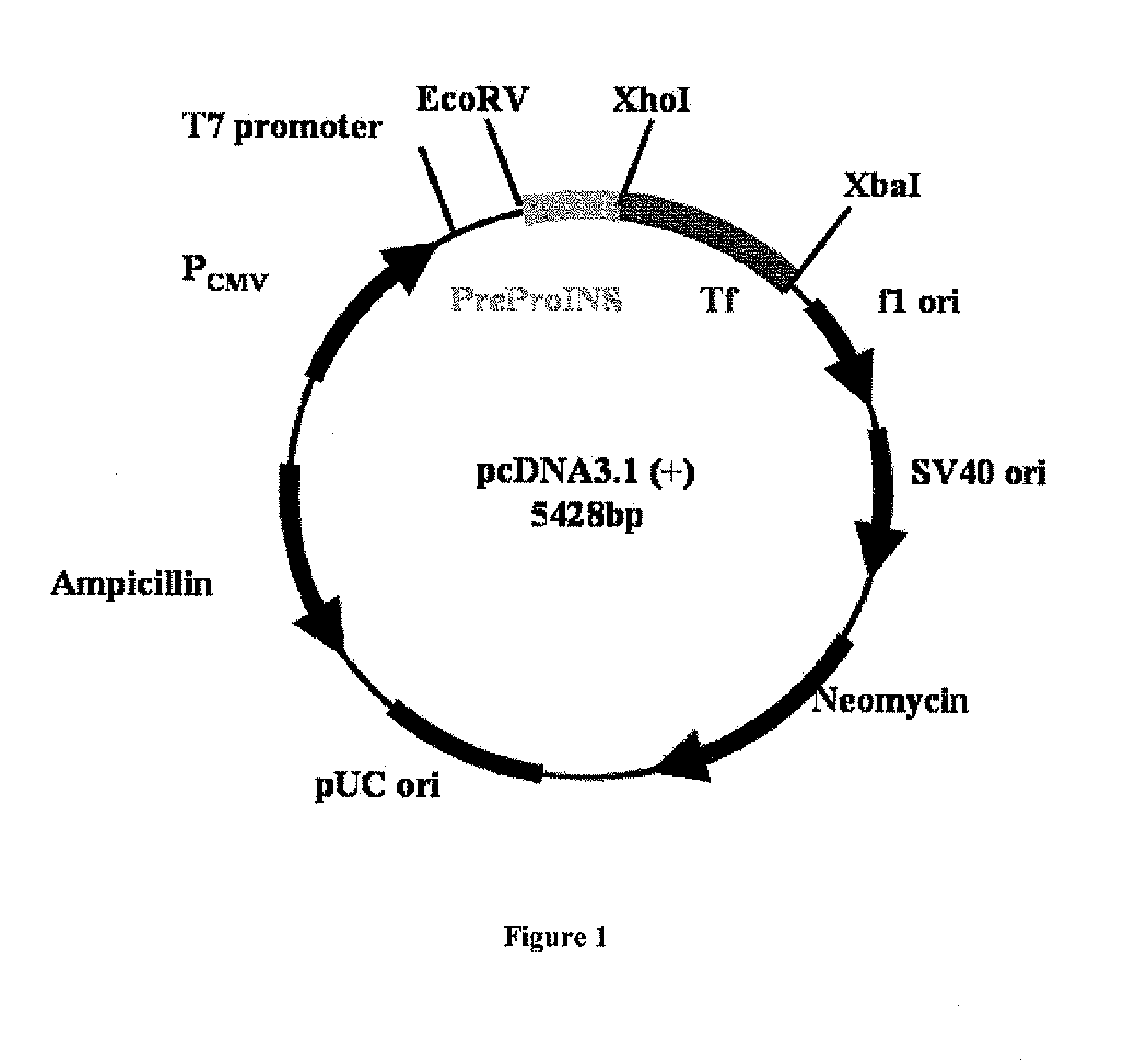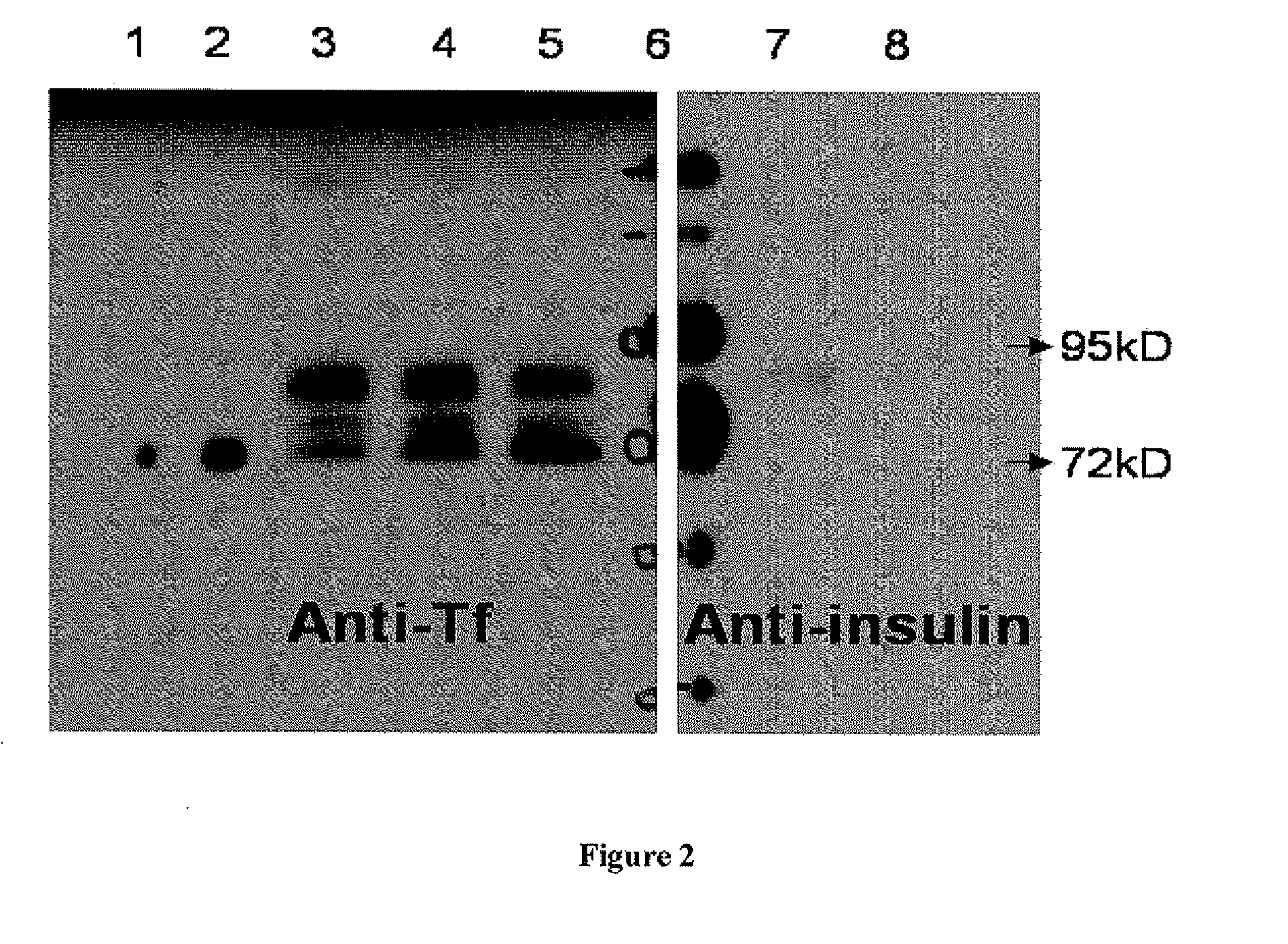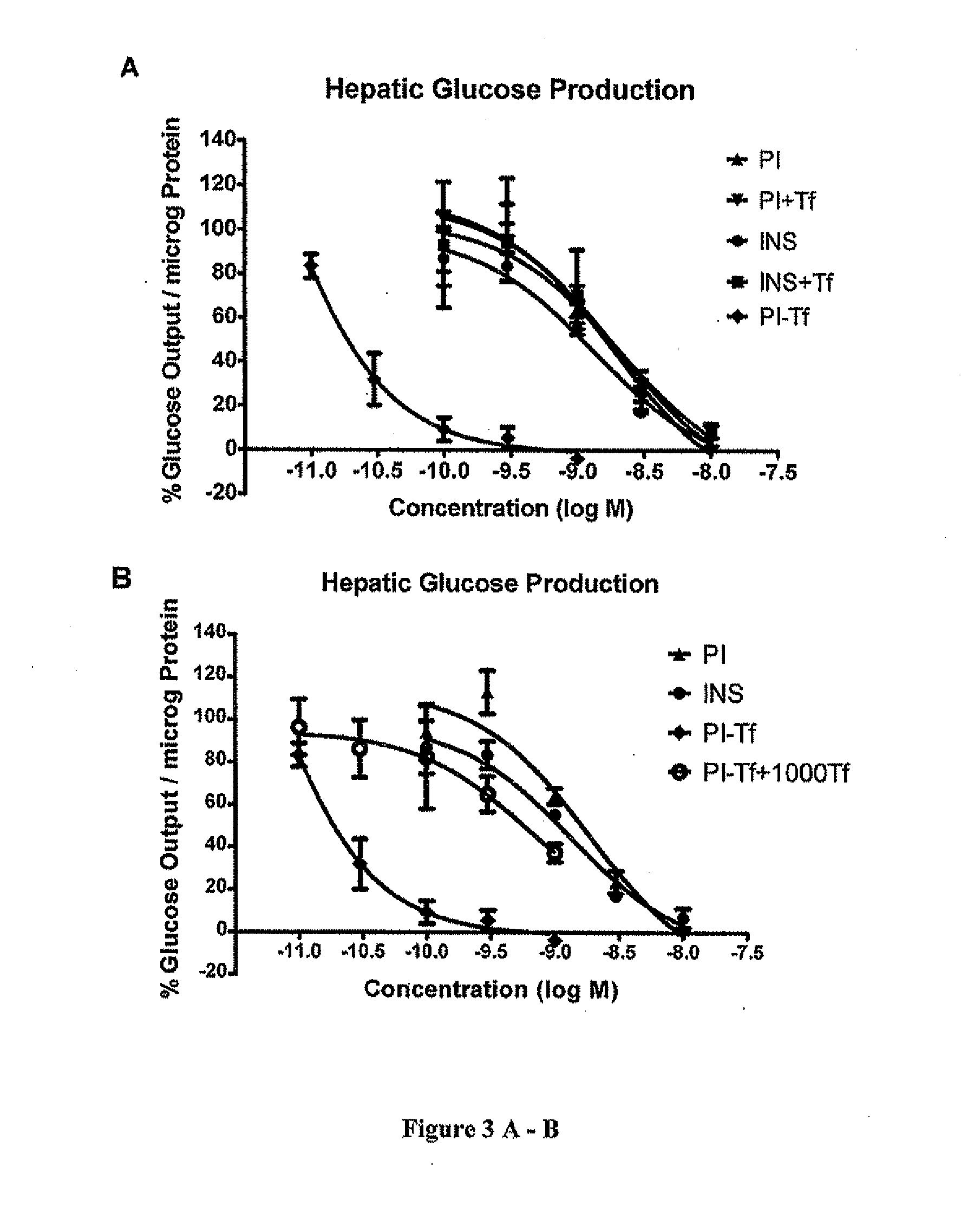Method for Uses of Protein Precursors as Prodrugs
a technology of prodrug and protein precursor, which is applied in the direction of peptides, transferrins, medical preparations, etc., can solve the problems of cost-inefficient and technical challenges in the production of prodrug propeptides, and achieve the effect of increasing the stability and sustained activity of insulin
- Summary
- Abstract
- Description
- Claims
- Application Information
AI Technical Summary
Benefits of technology
Problems solved by technology
Method used
Image
Examples
example 1
PI-Tf Recombinant Fusion Protein Expression and Characterization
[0032]Preproinsulin sequence (NM—000207) fused in frame with Tf sequence (NM 001063) was engineered into pcDNA3.1 (-9 expression vector (Invitrogen, Calif.) by molecular cloning methods (FIG. 1). Plasmids containing preproinsulin-Tf fusion gene were transiently transfected to HEK 293 cells through polyethylenimine-mediated DNA transfection. Conditioned serum-free media were collected and concentrated by labscale tangential flow filtration system (Millipore, Mass.), and then ultrafiltered by Centricon (Millipore, Mass.). PI-Tf fusion protein was characterized and quantified by Western blot using both anti-Tf (Sigma, Mo.) and anti-(pro)insulin antibodies (Abeam, MA). Anti-Tf and anti-(pro)insulin Western blots demonstrated the presence of a major band with molecular weight ˜89 kD, which indicated that PI-Tf fusion protein was successfully expressed and secreted into media. A leucine-glutamate dipeptide sequence was introd...
example 2
[0033]Enhanced Inhibition of Hepatic Glucose Production by PI-If Fusion Protein in H4IIE Hepatoma Cells
[0034]Rat hepatoma H4IIE cells were cultured in high-glucose DMEM containing 10% fetal bovine serum. Upon confluency, cells were treated with different drugs for 24 hrs at 37° C. Cells were washed twice with phosphate buffered saline. Glucose production media consisting of serum-, glucose- and phenol red-free DMEM supplemented with 2 mM sodium pyruvate and 40 mM LD-sodium lactate were added to cells for additional 3-hr incubation. The supernatant was harvested and applied to measure glucose concentrations using the Amplex Red Glucose / Glucose Oxidase kit (Invitrogen, Calif.) [5]. Cells were lysed in 1 M NaOH, and protein amount was quantified by BCA (Thermo Scientific, Ill.).
[0035]Proinsulin and insulin exhibited comparable inhibitory activities in glucose production with IC50 values of 1441.3±641.6 pM and 1093.9±105.6 pM, respectively (FIG. 3A). Proinsulin bound to insulin receptor...
example 3
Conversion of PI-If to Insulin-If Fusion Protein by Hepatoma Cells
[0036]Rat hepatoma H4IIE cells (ATCC, VA) were treated with PI-Tf fusion protein in
[0037]DMEM medium and incubated at 37° C. Media were collected at different time points, and subjected to insulin- and proinsulin-specific radioimmunoassays (Millipore, Mass.). Proinsulin and insulin concentrations were obtained based on standard curves from radioimmunoassays. After treatment in H4IIE cells for up to 24 hr, an insulin-containing species was continuously generated from PI-Tf fusion protein-treated samples, but not proinsulin-treated samples (FIG. 4). The generated insulin-containing species was suggested to be insulin-Tf instead of released insulin, since the two moieties were linked through stable peptide bonds. The conversion efficiency of PI-Tf to insulin-Tf was estimated 8.8% when dosed with 10 nM PI-Tf and 21.6% when dosed with 1 nM PI-Tf. These results demonstrated that the prohormone fusion protein PI-Tf can be co...
PUM
| Property | Measurement | Unit |
|---|---|---|
| Therapeutic | aaaaa | aaaaa |
| Plasma power | aaaaa | aaaaa |
Abstract
Description
Claims
Application Information
 Login to View More
Login to View More - R&D
- Intellectual Property
- Life Sciences
- Materials
- Tech Scout
- Unparalleled Data Quality
- Higher Quality Content
- 60% Fewer Hallucinations
Browse by: Latest US Patents, China's latest patents, Technical Efficacy Thesaurus, Application Domain, Technology Topic, Popular Technical Reports.
© 2025 PatSnap. All rights reserved.Legal|Privacy policy|Modern Slavery Act Transparency Statement|Sitemap|About US| Contact US: help@patsnap.com



